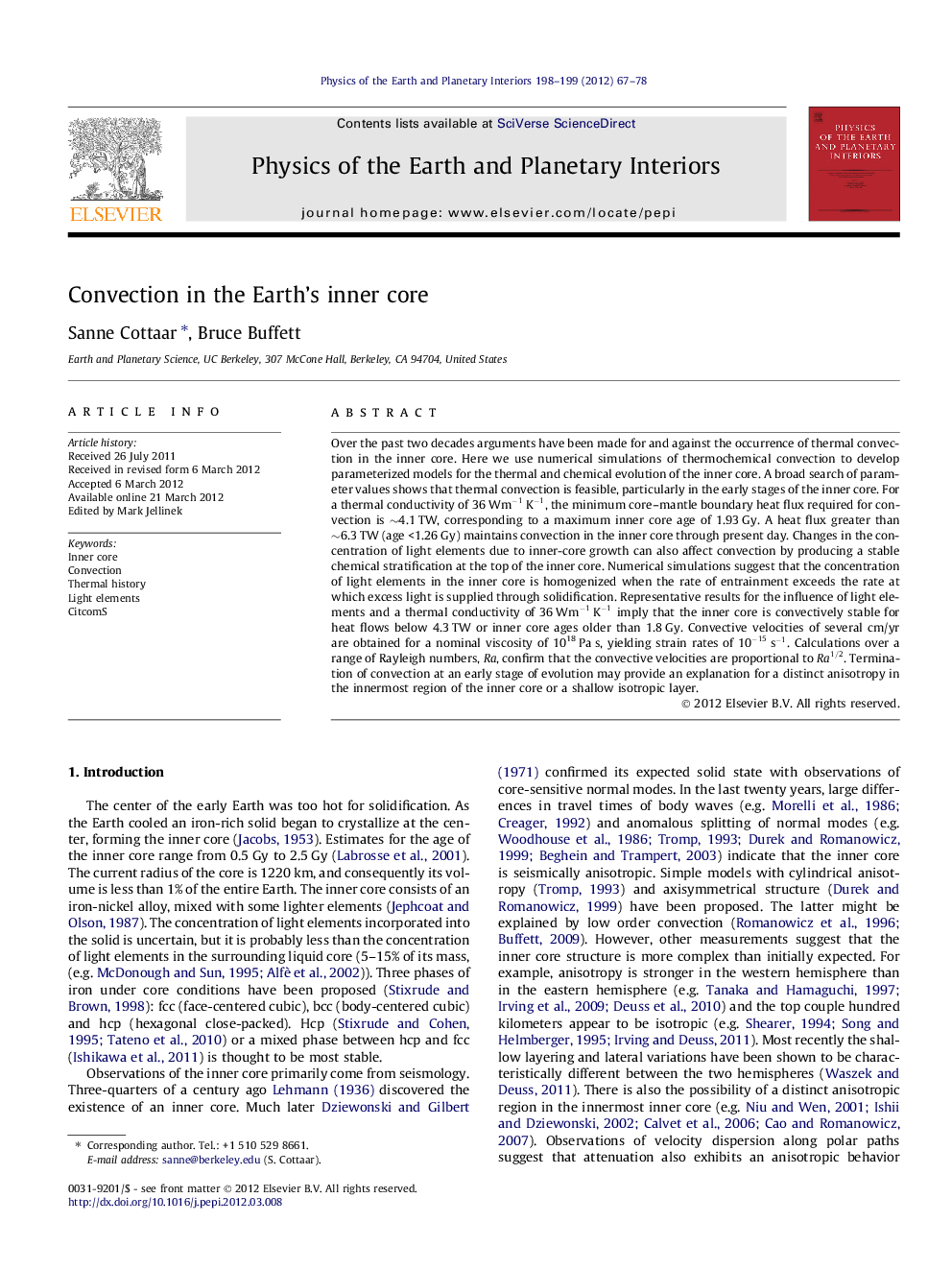| کد مقاله | کد نشریه | سال انتشار | مقاله انگلیسی | نسخه تمام متن |
|---|---|---|---|---|
| 4741806 | 1641535 | 2012 | 12 صفحه PDF | دانلود رایگان |

Over the past two decades arguments have been made for and against the occurrence of thermal convection in the inner core. Here we use numerical simulations of thermochemical convection to develop parameterized models for the thermal and chemical evolution of the inner core. A broad search of parameter values shows that thermal convection is feasible, particularly in the early stages of the inner core. For a thermal conductivity of 36 Wm-1K-1, the minimum core–mantle boundary heat flux required for convection is ∼4.1 TW, corresponding to a maximum inner core age of 1.93 Gy. A heat flux greater than ∼6.3 TW (age <1.26 Gy) maintains convection in the inner core through present day. Changes in the concentration of light elements due to inner-core growth can also affect convection by producing a stable chemical stratification at the top of the inner core. Numerical simulations suggest that the concentration of light elements in the inner core is homogenized when the rate of entrainment exceeds the rate at which excess light is supplied through solidification. Representative results for the influence of light elements and a thermal conductivity of 36 Wm-1K-1 imply that the inner core is convectively stable for heat flows below 4.3 TW or inner core ages older than 1.8 Gy. Convective velocities of several cm/yr are obtained for a nominal viscosity of 1018 Pa s, yielding strain rates of 10-15s-1. Calculations over a range of Rayleigh numbers, Ra , confirm that the convective velocities are proportional to Ra1/2Ra1/2. Termination of convection at an early stage of evolution may provide an explanation for a distinct anisotropy in the innermost region of the inner core or a shallow isotropic layer.
Journal: Physics of the Earth and Planetary Interiors - Volumes 198–199, May 2012, Pages 67–78